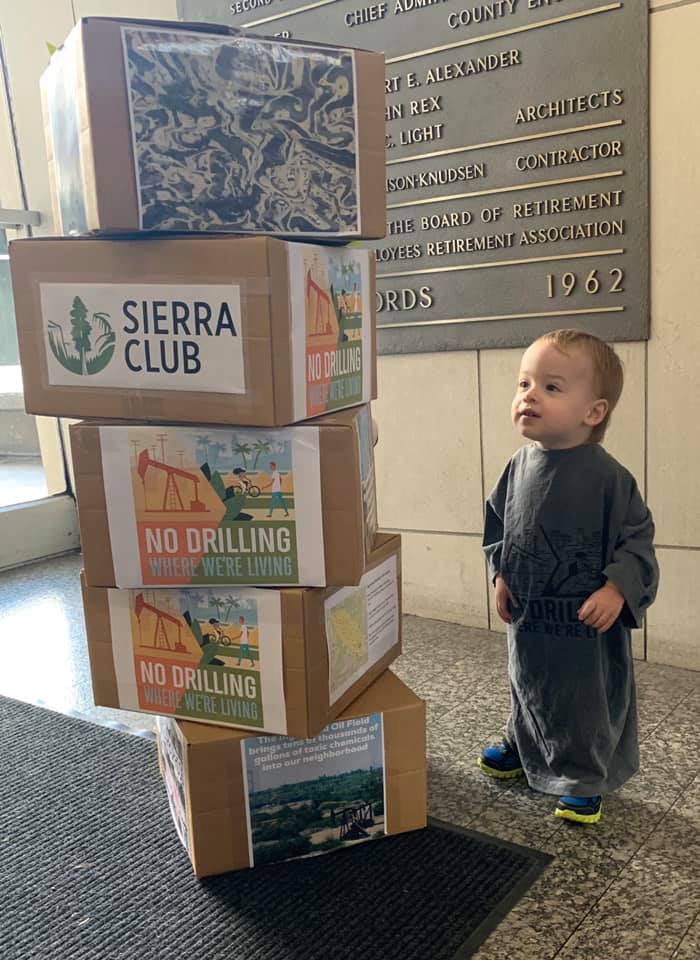
Baldwin Hills Inglewood Oil Field
The Inglewood oil field covers about 1,000 acres in Los Angeles County around Culver City, Baldwin Hills, Ladera Heights, View Park, and other neighboring communities. Oil and gas were discovered in the field in 1924, and currently there are a total of about 900 new, active, or idle wells. On average, 2.5 – 3.1 million barrels of oil are produced each year. The Inglewood Oil Field is operated by Sentinel Peak Resources. It is the largest urban oil field in the U.S., with more than one million people living within five miles of the site.

Health Impacts & Regulations

Neighbors to the Inglewood Oil Field have raised concerns for years about exposure to toxic chemicals and smog-forming gases. Many suffer from heart and lung disease, leukemia, lymphoma, lung cancer, nervous system damage, birth defects, and premature death.
The LA County Department of Public Health is required to complete a Health and Environmental Justice study of the impacts of the Inglewood Oil Field every 5-7 years. Their last study was published in April 2012. The County is currently working on their newest version.
Climate Impacts & Regulations
The pollution from Inglewood Oil Field is also a threat to our environment and climate. Continued oil extraction in the LA Basin—of which the Inglewood Oil Field is the second-most productive oil field—could release climate emissions about equal to annual emissions from 11 coal plants or 9.6 million passenger vehicles.
In September 2021, thanks to our organizing, the LA County Board of Supervisors voted to phase out oil drilling in LA County, including the Inglewood Oil Field.
However, due to ongoing litigation, the County has yet to phase out wells in the Inglewood Oil Field officially.
Legacy of Spills and Contamination

There is a long legacy of spills and disasters at the Inglewood Oil Field.
In April 2021, a pipeline leaked 1,600 gallons of oil on the field. In a July 2021 Community Advisory Panel, oil operators alerted the public to a 60 barrel contaminated water leak after members of the public filled odor complaints. And in March 2021, oil operators alerted the public to a possible methane leak that is currently ongoing.
On April 1, 2019, a oil spill ran down a hill, along the gutter and down into a storm drain. Investigation into this spill is currently pending.
On November 22, 2018, Thanksgiving night, a tank containing an oil-water mixture overflowed and caused a benzene exposure estimated at 7 times the legal limit set by the EPA. Benzene is a known carcinogen and may have extended as far as 4,100 feet from the spill location. Many residents called in complaints of noxious odors to the air board hotline (800-CUT-SMOG).
In October 2010, a local park was closed because of methane gas leaks from the field. In 2005 and 2006, major toxic releases forced residents to evacuate their homes. On December 14, 1963, the Baldwin Hills Dam breached and resulted in five deaths and $11 million in property damage.
We know that urban oil drilling is dangerous and needs to be phased out to protect people and our planet.
Our Solution

Community members have advocated for the area that is the Inglewood Oil Field to be transformed into a 1400-acre urban park, which would be the largest urban park in the United States to be created in over 100 years. The Baldwin Hills Park Master Plan published in 2002 reflects the community’s vision.
Despite the fact that voters approved $50 million in bond money to acquire half of the land for the park, these plans unfortunately never materialized because the oil operator discovered more oil could be extracted using enhanced oil recovery techniques. We support the community’s vision to transform this polluting property into a healthy green space for all to enjoy.



Take Action!
Download our trifold flyer or background fact sheet to share with your family, friends and neighbors.
Help spread the word on social media with the following images. Be sure to use our hashtag #NoDrillingWhereWereLiving










